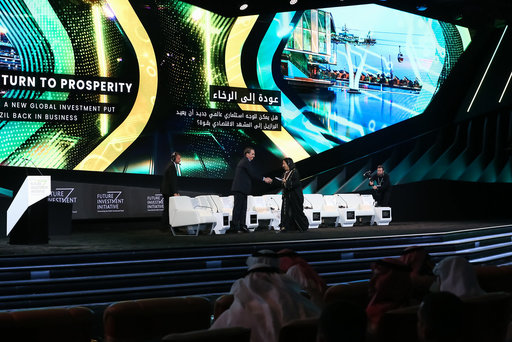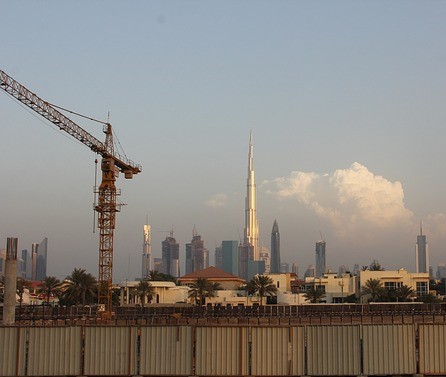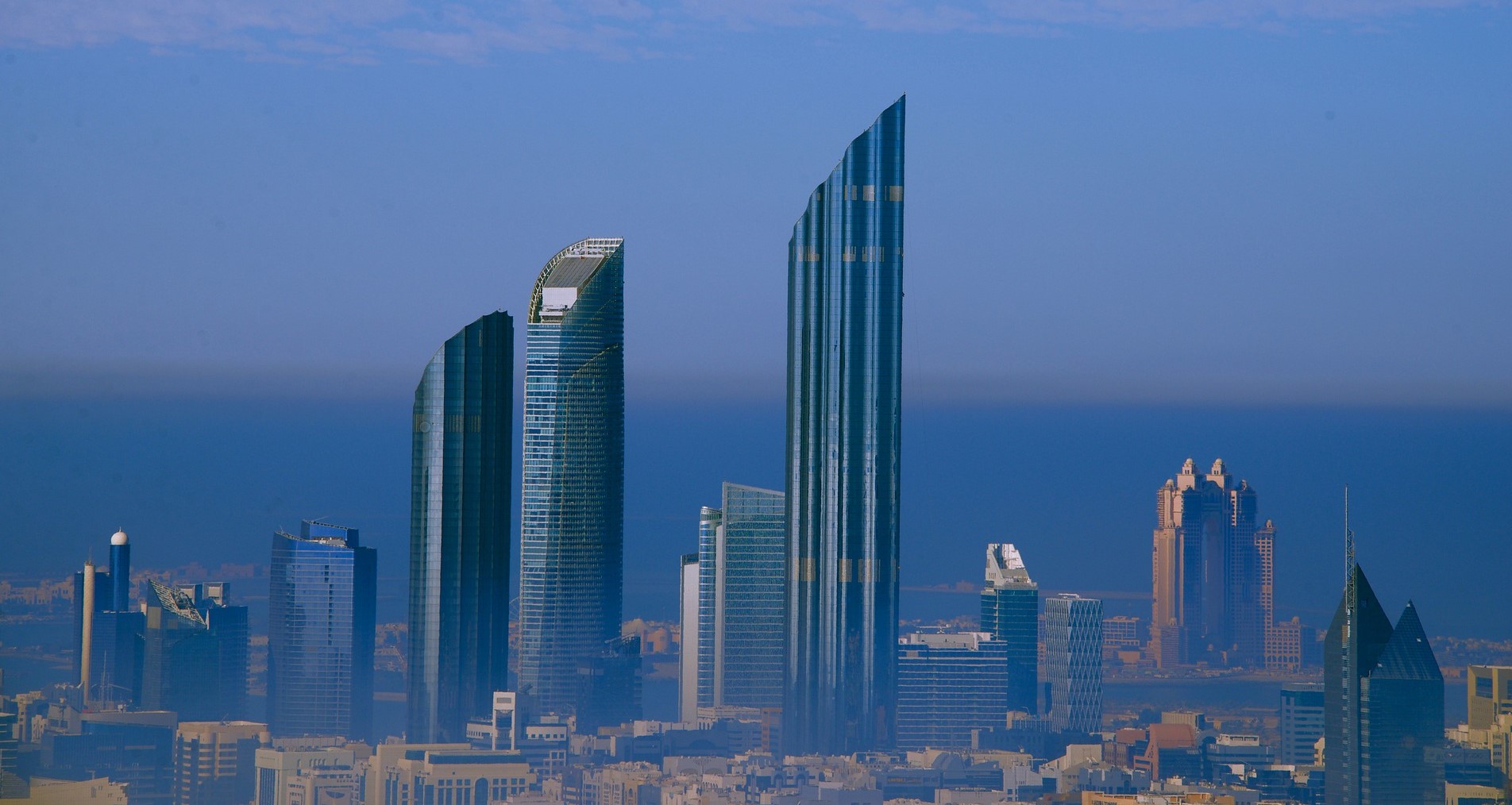Trends Magazine interviews Tahseen's Wes Schwalje for its September Issue
- High net worth individuals are playing an increasingly active role in global development and making large scale philanthropic contributions transparently and publicly
- A unique aspect of Arab philanthropy is the emergence of hybrid foundations which are funded by government or quasi-governmental funds and private donors
When it comes to news on socio-economic trends in the Arab World, government and business leaders turn to Trends Magazine. Tahseen Consulting is honored to have its insights on emerging trends in Arab philanthropy featured in the publication’s September issue.
Tahseen Consulting’s Chief Operating Officer, Wes Schwalje, spoke with Nikhil Inamdar, a leading voice on key business trends in the region, regarding the region’s transition from charity to strategic philanthropy. In a wide-ranging discussion, Schwalje discusses recently launched large scale philanthropic initiatives, emerging trends in strategic philanthropy, and what the future holds for Arab philanthropy.
Nikhil Inamdar: What are the latest trends being witnessed in Arab philanthropy?
Schwalje: The three most transformative trends I see now are as follows:
High Net Worth Individuals Are Playing an Increasing Role: In 2010, Berkshire Hathaway CEO Warren Buffet and Microsoft co-founder Bill Gates established the Giving Pledge to persuade American billionaires to donate at least half their wealth to philanthropy or charitable causes either during their lifetime or after their death. This initiative has since been broadened to include philanthropists globally.
In 2012, Tahseen Consulting conducted a study in which we looked at the potential impact of Arab billionaires signing the giving pledge. At the time, we estimated that $24 billion could be mobilized if Arab billionaires signed a pledge to donate their wealth to philanthropy.
While many high net worth individuals have a strong tradition of giving informally, we are witnessing more wealthy Arab individuals making large scale philanthropic contributions transparently and publicly. Their motivations are no different from philanthropists in other parts of the world – wanting to give back to those less fortunate, gaining public recognition and social capital, establishing a legacy, and playing a greater role in shaping their country’s or region’s future.
We are potentially witnessing a new phase of Arab philanthropy.
Key examples are the $1.1 billion donation of Abdullah Ahmad Al Ghurair to capitalize a private foundation and Prince Al Waleed bin Talal’s pledge to direct most of his $32 billion in wealth to philanthropy. We are likely to see several more of the Arab World’s approximately 36 or so billionaires making sizable pledge to philanthropic initiatives to strategically manage their wealth for the greater good.
The Transition from Charity to Strategic Philanthropy: In the past, charity in the Arab World was motivated by individual, unpublicized initiatives to give back to local communities. Giving was often focused on societal issues affecting local communities like poverty, housing, and heath care.
Arab philanthropy historically has been individually motivated acts of kindness that did not typically address the root cause of societal issues.
A pivotal watershed occurred in 2007 when Sheikh Mohammed donated $10 billion to endow his namesake foundation the Mohammed bin Rashid Al Maktoum Foundation. The scope of this philanthropic gesture catalyzed a number of dialogues in the region about strategic philanthropy. In the late 2000s, we witnessed a significant push in the region to institutionalize charity, philanthropy, and corporate social responsibility to make philanthropic efforts more strategic. This push towards philanthropic investment and strategic philanthropy remains rooted in the region’s religious traditions of Zakat and Waqf. In the early 2000s, many philanthropic efforts could still be characterized as donations to fund program execution by nonprofits. Philanthropists were primarily concerned about programmatic execution commensurate with the size of their donation with little regard for measuring impact and enhancing institutional capacity.
A pivotal watershed occurred in 2007 when Sheikh Mohammed donated $10 billion to endow his namesake foundation the Mohammed bin Rashid Al Maktoum Foundation. The scope of this philanthropic gesture catalyzed a number of dialogues in the region about strategic philanthropy.
The late 2000s saw the emergence of a number of endowed foundations in the region that began investing resources into nonprofit enterprises in order to increase their capacity to address the root causes of regional development challenges. By 2015, a number of the initiatives launched in the early 2000s and earlier have adopted strategic approaches to philanthropy which involve building internal capacities to deliver programs, developing the institutional capacities of nonprofit partners and grant recipients, pursuing programs with well thought out approaches that address the root causes of development issues, and strong systems of monitoring and evaluation to measure impact and value for money.
Arab Philanthropy is Playing an Increasingly Important Role in Global Development: Many of the region’s philanthropic institutions have become involved in international development and engage regularly with multilateral institutions and bilateral donors.
Increasingly large Arab philanthropic initiatives have been able to shape the policies of multilaterals and bilateral institutions through their funding, provide input on program design and development, and contribute funding for scaling up successful initiatives.
Nikhil Inamdar: What distinguishes Arab philanthropy from global philanthropy?
Schwalje: In addition to the relationship between philanthropic giving and religious traditions, a unique aspect of philanthropy in some of the Arab countries is the emergence of hybrid foundations which are funded by government or quasi-governmental funds and private donors. In other regions, public charities generally receive their funding from the public through grants from individuals, government, and private foundations, while private foundation generally receive funds from a single source, such as an individual, family, or corporation. In this respect, the definition of what constitutes a charitable organization and to whom it should be held accountable is not as clear cut as elsewhere. Adding to this confusion is the fact that many of the region’s philanthropists wear multiple hats in business and government.
Nikhil Inamdar: What will need to happen in terms of regulation etc. for this segment to mature like the way it has in Western economies like the US?
Schwalje: In many Arab countries, civil society laws make the registering of philanthropic organizations immensely difficult and can preclude fund raising. Such laws have the potential to negatively influence the development of civil society. Laws which might also serve to motivate individual giving and corporate philanthropy, such as tax deductible charitable giving, are also lacking.
Emerging forms of philanthropy, such as venture philanthropy and crowdfunding, currently exist in regulatory grey areas.
These will require regulation to ensure they can thrive in the region.
Nikhil Inamdar: Does philanthropy need to become more organized in terms of impact assessment, audit etc. so as to give the sector a more formal structure?
Schwalje: Several elements are required to Advance Arab Philanthropy:
Mapping Giving Patterns: More effort is needed to map philanthropic giving to determine what entities are giving and to whom in order to identify unmet needs. An interesting initial attempt to map private philanthropic contributions is the UAE’s Annual Foreign Aid Reports which included information on giving by many of the UAE’s philanthropic organizations. More information on giving patterns with promote coordination and reduce overlap of efforts.
A Focus on Improving Delivery Capabilities of Beneficiaries Linked to Funding: In many cases, regional nonprofits lack the capabilities and internal controls to absorb and manage large-scale donor contributions. This has promoted a tendency of Arab philanthropists to work with international organizations over home-grown Arab institutions.
Capacity strengthening of Arab donor recipients linked to philanthropic contributions will be required to strengthen the region’s civils society institutions to deliver more effectively on large-scale initiatives and attract larger philanthropic donations.
Improved Capabilities to Analyze Value for Money: Because of the youth of strategic philanthropy in the region, there are several organizational capabilities that philanthropic organizations need to improve. This includes identifying program objectives to determine the strategic intent and envisioned impact of initiatives, examining the ongoing relevance and validity of programs, ensuring efficiency and economy of activities, and assessing the impact of programming.















































